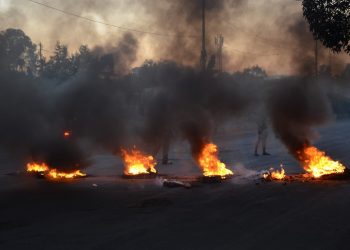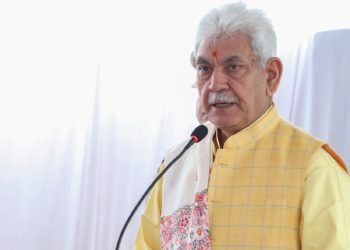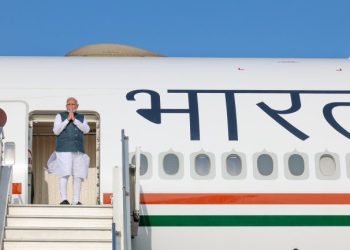New Delhi: When the uptick in wheat export started soon after the rabi arrivals this year – in April, Indian traders have already exported 11 lakh metric tonnes (LMT) of wheat – the primary reason was the increased demand to fulfill the gap created due to the war between Russia and Ukraine, the two largest wheat suppliers to the globe.
However, by May first week, along with the war, it was the drastically changing climatic conditions that added to the problem.
Extremely heavy rainfall in 2021 had delayed almost one-third acreage sowing of wheat in China and the wheat production this year could be “worst in history”, its minister had said.
From almost across the world, in the USA, the wheat production is at the lower spectrum owing to the exceptionally dry weather, including drought, in major wheat producing areas, thus impacting US’ summer and spring wheat production.
“In 2021, drought pushed production of the main variety, hard red spring wheat, down 44 per cent year over year to its lowest level in more than 30 years,” stated the Wheat Yield Forecast by Gro Intelligence, a leader forecaster describing the convergence of global economy and earth’s ecology. Its Wheat Yield Forecast Model – from April 6 – is currently pointing to a double-digit-percentage drop in production from last year. Some 40 per cent of total US wheat production comes from hard red winter wheat, and about one-third is from spring wheat.
Will India fulfill this need?
The whole world is staring at a shortage and there are just so few options. India, Australia and Argentina. India has already started en-cashing the demand fully aware that Argentinean wheat will lessen the demand from June.
India has been the highest exporter of rice but wheat in terms of value and volumes both was nowhere near to the top. India is now bullish. And mind you, it is not just the traders who want to increase wheat exports.
Guess who else? None other than the Prime Minister Narendra Modi himself.
On March 25, Union Minister for Commerce & Industry, Piyush Goyal while replying to a supplementary question related to wheat export during the question hour in Rajya Sabha had declared that Prime Minister Narendra Modi has said that the flavour of India’s wheat should capture the entire world’s taste buds and help increase the country’s wheat exports.
The Minister then went on to describe how in February, soon after the Ukraine-Russia war broke out, the Prime Minister had asked him about the steps taken for wheat export when the latter said: “Quality a Take this opportunity so that we give such good quality to the whole world that woh swad haamre gehun kaa sabko itna (achcha) lag jaaye, ki usake baad (sirf) hamare desh ka hi gehu niryat ho (so that the whole world remembers the taste of only India’s wheat and help increase our export of wheat.”
This season, about 40 LMT wheat has been contracted for export and about 11 LMT has already been exported in April 2022, Secretary, Food, Sudhanshu Pandey had told media persons on May 4.
The global demand has such an upsurge in wheat export that farmers are selling their produce to private traders and getting good remuneration. But this has resulted in a shortfall in government procurement at minimum support price (MSP).
As of May 4, on the one hand, food grain production was estimated at 1,050 lakh metric tonnes (LMT) against the earlier estimate of 1,113 LMT while on the other, the procurement of wheat for this year, i.e., 2022-23, was only 195 (LMT) compared to 433 LMT in 2021-22.
So what is it – global need or traders’ greed?
Questions were raised if such high exports were really a need or greed of the traders, more than the farmers? What if the Russia-Ukraine war extends for a much longer time? Will India continue wheat exports that long? What if the monsoon fails or affects production this year? What if there is a shortfall in India?
Government tried to assure that it has ample stocks to survive this whole year. Compared to 273 lakh metric tonnes (LMT) in 2021-22, the opening balance this year is 190 LMT, which makes the total availability 385 LMT this year, compared to 706 LMT last year. And, even after 305 LMT required for allocation / distribution to the beneficiaries under the National Food Security Act (NFSA), Other Welfare Scheme (OWS), Pradhan Mantri Gareeb Kalyan Ann Yojana (PMGKAY), the Food Corporation of India (FCI) would still have closing stocks of 80 LMT next year, as against the minimum stocking norms of 75 LMT as on April 1.
Supporting the wheat export, executive director of Centre for Sustainable Agriculture (CSA), G V Ramanjaneyulu, said there are two dimensions to the Russia-Ukrain war. “If this (war) has increased the demand for wheat, it has also hampered the fertilizers supply. This supply shortage can result in yield reduction,” he said, adding, “In this, even if you factor in less production due to vagaries of nature, it is not going to affect significantly.”
As happened this year. India experienced an unprecedented rally of heat waves in March and April in northwest India, the time when the wheat crop is getting ready and harvested. The back to back three heat waves led to shriveling of grains, especially in Punjab and Haryana.
Stating that yield reduction due to natural calamities is never beyond 10-15 per cent thanks to the diverse climatic conditions across India. So, actually, beyond the buffer stock, India should get rid of all extra stock as storage costs are just too high,” he said.
There are sufficient food stocks to feed people.
But not all are looking at it in terms of need, greed or feed conundrum. Devinder Sharma, an expert in agricultural and environmental issues, said: “India cannot go on exporting wheat like this. We need to have a strict upper limit of 12 million tonnes.”
“Buffer stocks are needed and in view of the times to come, India actually needs to increase its buffer,” he said.
But more than the question of buffer stock, Sharma raised a significant point. “Per kg of wheat needs 1,600 litres of water just as rice needs 4,000 litres per kg to grow. With every grain that we export, we are sending out our precious water.”
(IANS)



















